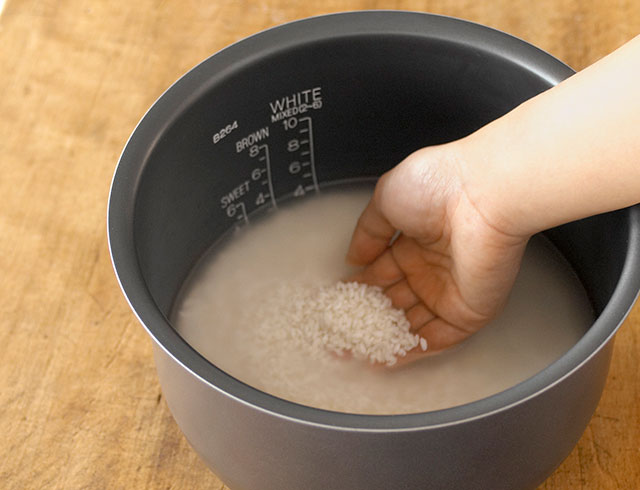 Rice is a staple in kitchens all over the world. Last month we discussed how to correctly store rice to preserve its nutrients, freshness and quality, as well as how to measure rice to prepare it perfectly. In our post this month, we share our secret for rinsing and washing short-grain Japanese rice.
Rice is a staple in kitchens all over the world. Last month we discussed how to correctly store rice to preserve its nutrients, freshness and quality, as well as how to measure rice to prepare it perfectly. In our post this month, we share our secret for rinsing and washing short-grain Japanese rice.
The key to washing and rinsing rice is to be quick and gentle. Before modern milling methods, rice was typically not as clean and bran-free as it is today. Improved million methods now result in rice that is cleaner, but also more sensitive to scrubbing and soaking. Rice grains can break if they are rubbed together too harshly, so it’s important to use a light touch. Rice grains that have had the bran polished off also begin absorbing water quickly, so it’s important to limit the time short-grain rice is exposed to water, especially as the water becomes dirty.
There are four steps to rinsing and washing rice the Zojirushi way.
Wash Rice the Zojirushi Way
Preparation
Measure and add the desired amount of rice to the inner cooking pan of your Zojirushi rice cooker using the rice measuring cup that comes with it. Fill a separate bowl with clean, cool water and pour it into the inner pan.
Initial Rinse
With an open hand, stir the rice in the water 2-3 times, then drain. Repeat this initial rinse step up to three times, until the water begins to run clear. Be sure to spend no more than 10 seconds during each rinse, so the rice doesn’t absorb the starchy water.
Wash the Rice
After the initial rinse, make a claw with your hand and quickly stir the drained but wet rice 30 times in a circular motion, without squeezing the rice in the palm of your hand. Pool cool water in a separate bowl while you rinse, and pour into the rice, stir gently two to three times, and drain. Repeat this step two to four times, depending on how starchy your rice is. For less than four cups of rice, wash it twice. For between four and seven cups of rice, wash it three times, and for more than eight cups of rice, wash it four times. If the water remains cloudy, keep washing and rinsing until the rice grains are visible through the water. Be sure to work quickly so that each wash takes only 15 seconds or less. Washing the rice this way prevents it from breaking and cleans residue and starch from each grain.
Final Rinse
The final rinse removes any remaining starch from the rice. Pour plenty of water into the inner pan, stir with an open hand and drain the rice. Repeat this step twice to ensure that the rice is clean.
Be sure to complete the four steps within 10 minutes, and the rice is ready to cook! You know how to wash rice!
Get Cooking!
Different types of rice need to be washed and rinsed in their own ways. Our method works best for short-grain white rice. Let us know how you prepare your rice!
Leave a Reply